What is the one solution to all problems? Tea. Long day at work; nothing beats it like a cutting chai on the way back home. Sick day blues; what better than cozying up on the couch with a good book and a steaming cuppa? Stuck at home while it pours cats and dogs outside? Chai and bhajiyas, isn’t it obvious? ’Tea has long been an institution, with millions of cups supped each day, making it an unlikely staple of modern-day living. But now it seems that green tea and even the humble brew has regained its status as a healthy beverage. This is because, studies have proven that this cuppa offers more than a simple caffeine fix with tremendous health benefits. Here are 8 reasons why you should drink tea every day.
After water, tea is the second most consumed beverage in the world. Originating in China, tea has made its way around the world since the 16th century and managed to capture the attention and admiration of doctors and poets alike.
Technically speaking, tea is an aromatic beverage prepared by steeping the leaves of the plant Camellia Sinensis in hot water. It has a slightly bitter and astringent taste with a cooling sensation. There are only four varieties of this plant – Black, White, Green and Oolong. Other adaptations like chamomile and lavender tea are prepared without the use of this particular plant and labeled as Herbal Teas or tisanes.
A beverage loved and appreciated the world over; tea does deliver on the health front in all aspects. Tea contains catechins that have anti-inflammatory and neuro-protective properties. An amino acid, L-theanine known to promote a calm, alert and focused mental state in humans is the reason tea produces a soothing effect on consumption. People with a history of consuming green tea were found to report lower rates and risks of cardiovascular diseases, some forms of cancer, reduction of blood pressure and osteoporosis. Thanks to the ample presence of anti-oxidants, consumption of tea is said to result in improved resistance to bacteria and viruses and fortification of the immune system. Caffeine, quite evidently, improves alertness and stimulates nervous activity.
According to the amount of processing the tea leaf undergoes, tea can be classified into:
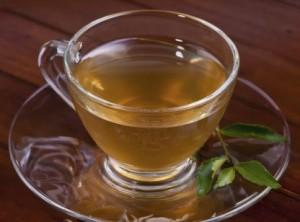 White Tea – This is the least processed tea. The leaves and buds are carefully picked while they are still young. The fine silver hair on the yet to mature buds gives the tea its name. Drying in the natural sunlight prevents them from oxidation which is sometimes supplemented by lightly baking them in ovens. On being steeped, the tea imparts a pale-yellow appearance and a slight sweet taste to the beverage. White tea contains the same health benefits as the other types but it is particularly rich in anti-oxidants. The Silver Needle and the Darjeeling tea are the most loved (and expensive) varieties amongst White teas.
White Tea – This is the least processed tea. The leaves and buds are carefully picked while they are still young. The fine silver hair on the yet to mature buds gives the tea its name. Drying in the natural sunlight prevents them from oxidation which is sometimes supplemented by lightly baking them in ovens. On being steeped, the tea imparts a pale-yellow appearance and a slight sweet taste to the beverage. White tea contains the same health benefits as the other types but it is particularly rich in anti-oxidants. The Silver Needle and the Darjeeling tea are the most loved (and expensive) varieties amongst White teas.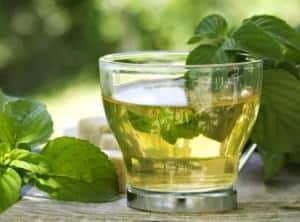 Green Tea – The leaves are harvested in three installments in a year. Known as ‘flushes’, the first flush delivers the best quality among all. Mature leaves are plucked and sorted according to their size and steamed or pan-fried. Care is taken to ensure that the leaves go through minimal oxidation to retain maximum polyphenols and anti-oxidants. The level of caffeine is also less pronounced than it is in Black Tea. This is followed by rolling the leaves in different shapes by hand or machines before they are left to dry and be packed. Green Tea is a particular favorite amongst dieticians and fitness expert as it helps in increasing the metabolism, resulting in weight-loss. It is continually being incorporated into diets, cuisines as well as cosmetics in the recent past.
Green Tea – The leaves are harvested in three installments in a year. Known as ‘flushes’, the first flush delivers the best quality among all. Mature leaves are plucked and sorted according to their size and steamed or pan-fried. Care is taken to ensure that the leaves go through minimal oxidation to retain maximum polyphenols and anti-oxidants. The level of caffeine is also less pronounced than it is in Black Tea. This is followed by rolling the leaves in different shapes by hand or machines before they are left to dry and be packed. Green Tea is a particular favorite amongst dieticians and fitness expert as it helps in increasing the metabolism, resulting in weight-loss. It is continually being incorporated into diets, cuisines as well as cosmetics in the recent past. 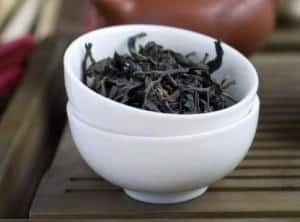 Oolong Tea – The leaves are allowed to undergo oxidation from levels ranging from 8% to 85%. Oxidation is then suppressed by allowing the leaves to wither and dry under the strong sun or by directly firing them before being curled and rolled. The colour of the leaves can differ from almost black to dark green. The taste of Oolong teas cover a wide spectrum based on the level of oxidation of the leaves. Ranging from sweet with fruity aromas, to woody with grassy under-notes, the style of production and processing influences the taste. High quality Oolong can be steeped more than once. In fact, it has been found that the taste improves significantly by the 3rd or 4th iteration. Oolong is especially popular among connoisseurs because of its varied taste palate.
Oolong Tea – The leaves are allowed to undergo oxidation from levels ranging from 8% to 85%. Oxidation is then suppressed by allowing the leaves to wither and dry under the strong sun or by directly firing them before being curled and rolled. The colour of the leaves can differ from almost black to dark green. The taste of Oolong teas cover a wide spectrum based on the level of oxidation of the leaves. Ranging from sweet with fruity aromas, to woody with grassy under-notes, the style of production and processing influences the taste. High quality Oolong can be steeped more than once. In fact, it has been found that the taste improves significantly by the 3rd or 4th iteration. Oolong is especially popular among connoisseurs because of its varied taste palate. 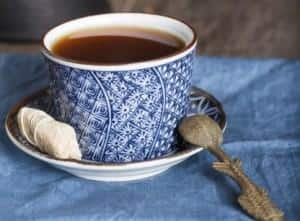 Black Tea – Over 90% of all tea sold worldwide, is black. This is primarily because of its ability to retain flavor for years as opposed to green which has a shelf life of a year. This tea goes through the most processing. After picking, the leaves are dried in the sun till they wilt. The leaves are then crushed to expose the tissues to air. The compounds therein react with the air and are allowed to ferment till they are completely oxidized. During this time, the leaves gain their black colour. The temperature and humidity are rigidly controlled according to standardized parameters. After a final bout of drying, the leaves are sorted with respect to leaf size into whole leaves, fannings and dust. Darjeeling, fondly called the ‘Champagne of Teas’ produces the world’s finest black tea, followed by the Anhui province in China.
Black Tea – Over 90% of all tea sold worldwide, is black. This is primarily because of its ability to retain flavor for years as opposed to green which has a shelf life of a year. This tea goes through the most processing. After picking, the leaves are dried in the sun till they wilt. The leaves are then crushed to expose the tissues to air. The compounds therein react with the air and are allowed to ferment till they are completely oxidized. During this time, the leaves gain their black colour. The temperature and humidity are rigidly controlled according to standardized parameters. After a final bout of drying, the leaves are sorted with respect to leaf size into whole leaves, fannings and dust. Darjeeling, fondly called the ‘Champagne of Teas’ produces the world’s finest black tea, followed by the Anhui province in China.
Herbal Tea – Also known as tisanes, they are concoctions of herbs, spices, roots, flowers and fruits in hot water, for the medicinal properties of each ingredient. Although, they are referred to as teas, what sets them apart is the absence of Camellia Sinensis or tea leaves in the beverage. They may have a low anti-oxidant level than real teas, but according to the ingredients used, tisanes can have several fragrant, therapeutic and stimulating effects.
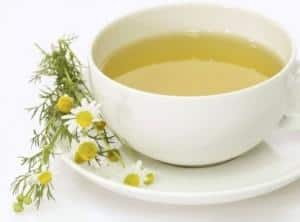 Chamomile is a popular herb that’s used in teas worldwide. Chamomile soothes the stomach and relieves bloating and indigestion. Chamomile also calms the mind and helps people relax and deal better with their stresses. Chamomile is known to fight insomnia by relaxing the body and the mind, enabling the person to fall asleep naturally.
Chamomile is a popular herb that’s used in teas worldwide. Chamomile soothes the stomach and relieves bloating and indigestion. Chamomile also calms the mind and helps people relax and deal better with their stresses. Chamomile is known to fight insomnia by relaxing the body and the mind, enabling the person to fall asleep naturally.
Ginger tea both stimulates and soothes the digestive system. Ginger has been known to aid people experiencing nausea. Arthritic people have found ginger tea helpful since it has anti-inflammatory properties. Probably that’s why, Adrak wali chai is the most used phrase in Indian households.
Lavender tea is made out of the dried purple, pink and white colored flowers that grow on lavender shrubs. A cup of lavender tea can soothe your mind and body, inducing sleep. It helps soothe and treat flatulence, colic, bowel infections and an upset stomach.
Dried Hibiscus flowers are made into a tea that is known to lower blood pressure, reduce high cholesterol and strengthen the immune system (it’s rich in Vitamin C). Hibiscus flower infusions have known to reduce hypertension as well. A recent study reveals that hibiscus tea is rich in antioxidants, which protect the body against cell-damaging free radicals.
PS: Marijuana is a herb too and they make weed tea!
#1 Tea reduces your risk of heart disease:
Tea can potentially improve the blood flow in the body, by widening arteries and reducing the risk of clots. It also contains antioxidants called ‘flavonoids’, which may slow down the onset and risk of heart disease. So, to reap in the heart-healthy benefits of tea make it a habit to start your day with a warm cuppa of tea.
#2 Tea hydrates your body:
After a long day in the office or after exercise, you might feel the need to rehydrate your body. Although water is the first choice to rehydrate the body, drinking a cup of tea is a fat better option health-wise. Being rich in caffeine, tea provides you a rich and flavoursome source of water along with a wide range of nutrients.
#3 Tea prevents tooth decay:
Believe it or not, a regular supply of tea can really strengthen your teeth and lower the risk of tooth decay. Tea is a great source of fluoride, which can bolster tooth enamel. The antioxidants contained within a cuppa have also been known to fight against bacteria and gum disease. So get slurping!
#4 Tea can make you slim!:
Some scientific studies have suggested that regular intake of tea (especially in the morning and before lunch) complements your weight loss goal. A cup of tea prevents you from putting on weight along with speeding up the burning of calories. If nothing else, it is less fattening than sipping on a soft drink.
#5 Tea boosts your memory power:
Many scientists believe that certain types of tea such as green tea, can strengthen the function of memory cells in the brain. Apart from this, drinking a cup of tea can offer protection from the development of dementia and even Alzheimer’s disease. No wonder why our parents and grandparents used to drink so much tea!
#6 Tea protects against cancer:
Some high-profile studies have recently suggested that tea drinking could lower your chances of suffering from cancer. Several reports indicate that prostate, mouth and breast cancer cases are much lower amongst those who regularly drink five or more cups of tea a day as compared to people who do not drink tea. Although research in this regard is still in its nascent stage, the anti-cancer property is attributed to the presence of antioxidants in tea.
Types of healthy tea – Green tea, black tea and oolong tea:
With so many potential health benefits, there’s never been a better time to put the kettle on. But which form of tea is the most beneficial to you? Is that large cup of creamy, sugary black tea really going to help your body feel better? Let’s find out.
Benefits of Green tea:
In addition to the numerous health benefits mentioned above, green tea has also been found to boost the performance of the liver, and prevent arthritis by strengthening bones. However, to get the most benefit from your green tea drinking, try and brew it from loose leaves rather than the tea bag. It’ll add flavour and allow more antioxidants to be released into your cup! But, ensure to make green tea in a healthy way.
Benefits of Black tea:
Whilst green tea often grabs the headlines, black tea also possesses many of the health bonuses mentioned above. Offering a strong source of antioxidants, it is great for preventing viruses in the mouth and gums and has also been known to widen impaired arteries by as much as 50per cent, preventing blood clots. Apart from black tea,there are numerous tea varieties you can try.
Benefits of Wu long(oroolong) tea:
This Chinese tea is said to be the best for burning off calories, as well as boosting the body’s immune system. Unlike green tea,wu longtastes sweet instead of grassy.It thereforeoffers a much more welcoming taste, in addition to its myriad body benefits.
So, brew up a healthy cuppa today and you’ll be feeling tea-rrific in no time!
No comments:
Post a Comment